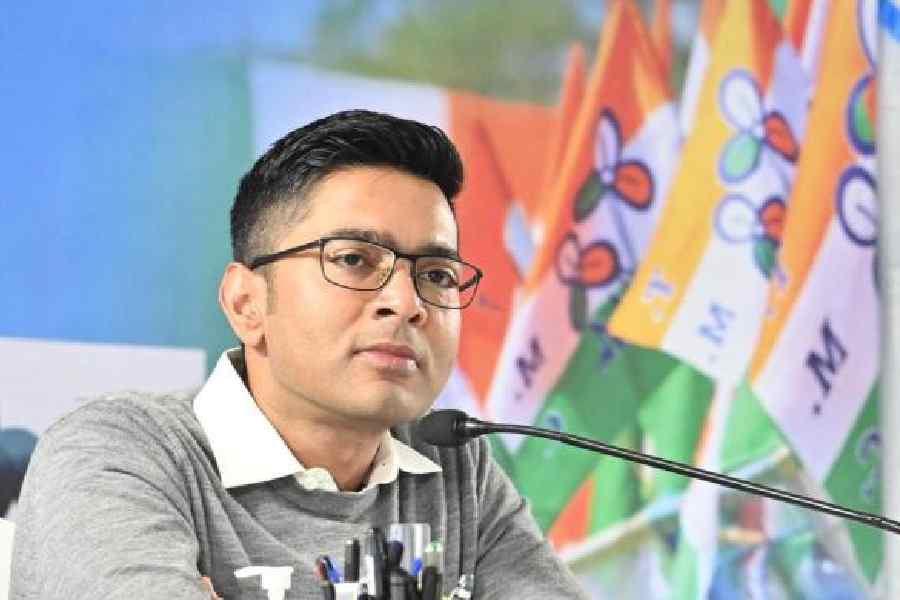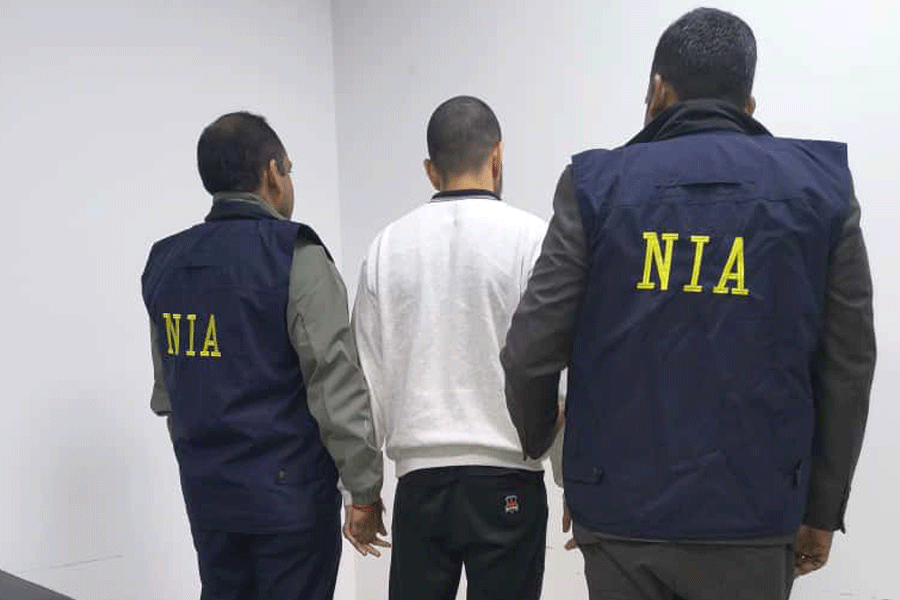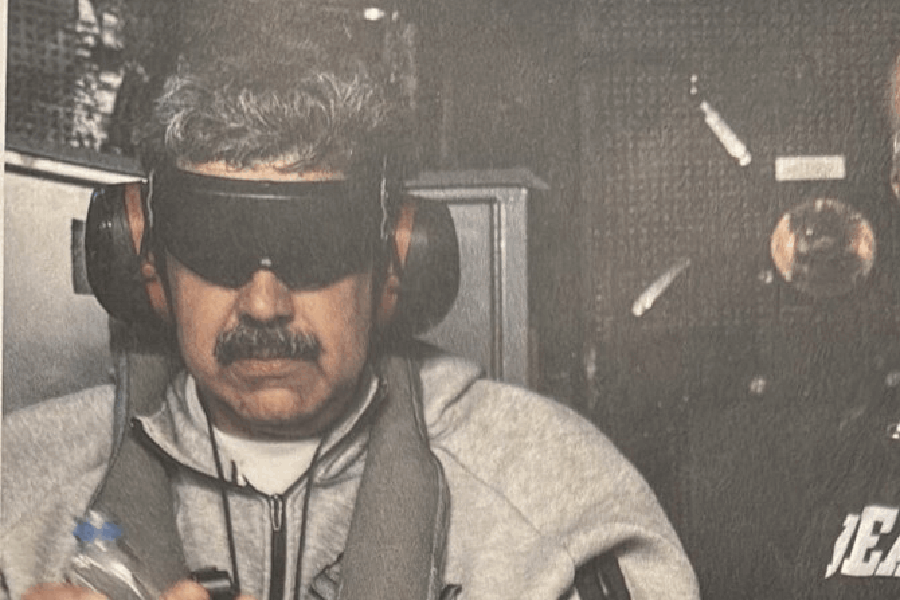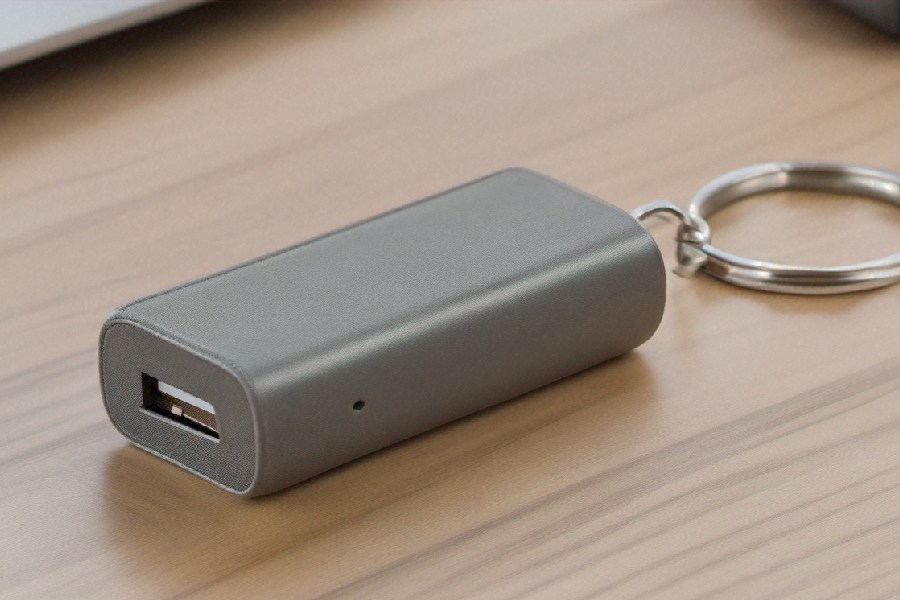 |
| Hard trick: Prof. Pradip Narayan Ghosh with the MOT cell |
What happens when neutral atoms are cooled in a chamber? The question beckoned physicists all over the world to understand fundamental nature of atoms. Why? Because in the next few decades, extremely cold atoms to be used in atomic chips will hold the key in nanotechnology. They will also be used in making quantum computer ? number crunchers hugely more powerful than the ones used today. The future lies in producing a beam of cold stable atoms that can help process data much faster than the current chips do. It can revolutionise the sizes of electronic gadgets.
That is why exciting results in laser cooling and trapping of neutral atoms have become so fascinating in fundamental research in physics. ‘Cooling’ atoms means reducing their velocity and confining them to a particular region in space, because what we perceive as their temperature is actually the effect of their zig-zag movements.
Two years back, scientists at the University of Calcutta (CU) went for such an exercise. Their success, for the first time achieved with indigeneous equipment by any university or IIT in India, came last month. At the Rajabazar Science College lab, they have cooled atoms in a small glass chamber, putting them under half a dozen properly polarised laser beams in a strong but inhomogeneous magnetic field. This is known as a magneto-optical trap (MOT) method; it was chosen out of a few techniques available to ‘cool’ atoms.
Following up their success, a group of five physicists, led by Prof. Pradip Narayan Ghosh, has been confining rubidium atoms to a tiny volume of one cubic millimetre in a unique-shaped glass cell (MOT cell).
Impinging laser beams lead to strong damping of the atomic motion at the central meeting region of the MOT cell. The magnetic field regulates the rate at which photons scattered from various laser beams push the atoms to a small volume. The fluorescence from the beams illuminates atoms. Atoms that are moving towards the centre often get scattered. A certain amount of pressure helps compress the faster atoms by curbing their velocity distribution and diffusion.
This helps the researchers study the behaviour of the almost-stable atoms. In the MOT method, the advantage, according to Ghosh, is that the confined, cold atoms stay in that state for a long time.
The entire experiment has been carried out with indigenous instruments. “In India, this was earlier done at the Indian Institute of Science and the Raman Research Institute, Bangalore, and the Bhabha Atomic Research Center (BARC), Mumbai,” said Ghosh. “All those successes came using mostly imported lab components. But most of the instruments, including the brass stands, optical hardware and MOT cell, used by us are indigenous ? made either at the CU’s own workshop or in BARC. The transparent ten-funnelled vacuum MOT cell made up of Pyrex BK7 compound was specially manufactured at the BARC glass workshop.”
Prof. Biswajit Roy, co-researcher, who monitored laser frequencies and electromagnetic field interference, said, “The higher-level experiments taming the atoms open up a plethora of possibilities ? development of quantum computers and the so-called Bose-Einstein condensates of dilute gases. The ultra-cold atomic samples have applications in very high resolution spectroscopy and refined atomic clocks, atom optics etc.” According to him, cold atomic vapours can be used to test degenerate quantum gases ? a useful advancement in quantum physics research.
To achieve a very high accuracy in the MOT test, one has to bring the atoms to as low a velocity as possible, at least a few metre/second. If laser beams are not perfectly synchronised and the electromagnetic field fluctuates, the ideal oval-shaped atomic cloud is deformed. Electronic design and high-precision optical alignment for laser beams were carried out by three students involved in this project, Ayan Roy, Shrabana Chakrabarty and Amitava Bandyopahyay.
At present with the available setup, they have been able to confine almost a hundred million atoms at a temperature of nearly a hundred micro-kelvin (approximately -273.1599 0C) in the glass chamber. They have also observed the expansion of the atomic cloud after switching off the magnetic field acting on the MOT chamber. For Bose-Einstein Condensation (BEC) experts usually confine around 10,000 atoms at a temperature thousands of times lower than that. This was achieved by Nobel laureates Eric A. Cornell, Carl E. Wieman and Wolfgang Ketterle who observed the first BEC.
Ghosh is now eyeing at the next higher levels of successes. Up to 1,000,000,000 atoms can be confined at a temperature of tens of microkelvins for a few seconds. But the physicists at the Science College are not much hopeful to achieve that mark. “The job ahead,” says Ghosh, “is to stabilise the atomic cloud, so that we can get the optimum result suitable for precision measurement of fundamental atomic properties. We have just gone through one interesting stage of a very exciting and fundamental research in physics.” The project was aided by the department of atomic energy (DAE) and the department of science and technology (DST), government of India.










